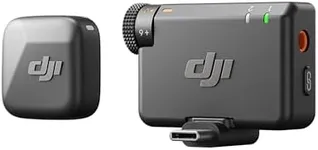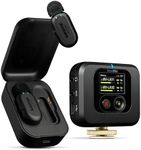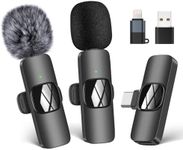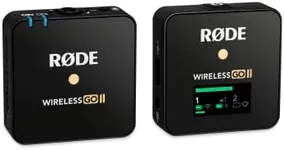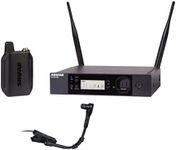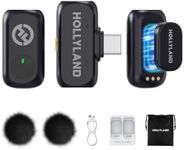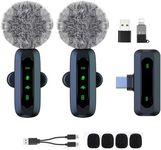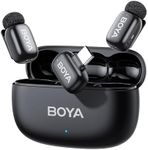Buying Guide for the Best Clip-On Microphones
Choosing the right clip-on microphone can significantly enhance your audio recording experience, whether you're a content creator, a public speaker, or someone who needs to capture clear audio hands-free. Clip-on microphones, also known as lavalier microphones, are small and discreet, making them ideal for various applications. To find the best fit for your needs, it's essential to understand the key specifications and how they impact performance. Here are the main specs to consider when selecting a clip-on microphone.Polar PatternThe polar pattern of a microphone describes how it picks up sound from different directions. Common polar patterns for clip-on microphones include omnidirectional and cardioid. Omnidirectional microphones capture sound equally from all directions, making them ideal for situations where the speaker moves around or when you want to capture ambient sound. Cardioid microphones, on the other hand, are more directional and pick up sound primarily from the front, which helps reduce background noise. Choose an omnidirectional microphone if you need flexibility in movement or want to capture a natural sound environment. Opt for a cardioid microphone if you need to focus on a single sound source and minimize background noise.
Frequency ResponseFrequency response refers to the range of frequencies a microphone can capture. A wider frequency response means the microphone can pick up a broader range of sounds, from low bass to high treble. For most speech and vocal applications, a frequency response of 20 Hz to 20 kHz is sufficient. If you need to capture a wide range of sounds, such as musical performances, look for a microphone with a broader frequency response. For general speech and interviews, a standard frequency response will suffice.
SensitivitySensitivity measures how effectively a microphone converts sound into an electrical signal. Higher sensitivity means the microphone can pick up quieter sounds more easily. This is important if you need to capture soft-spoken voices or if the recording environment is not very loud. Sensitivity is usually measured in decibels (dB). For most applications, a sensitivity range of -50 dB to -30 dB is adequate. If you are recording in a quiet environment or need to capture subtle sounds, opt for a microphone with higher sensitivity.
ConnectivityClip-on microphones can connect to recording devices in various ways, including wired and wireless options. Wired microphones typically use a 3.5mm jack, XLR, or USB connection. Wireless microphones use a transmitter and receiver system, often connecting via Bluetooth or dedicated wireless frequencies. Wired microphones generally offer more reliable sound quality and are less prone to interference, making them suitable for stationary setups. Wireless microphones provide greater mobility and are ideal for dynamic environments where the speaker needs to move around. Choose a wired microphone if you prioritize sound quality and stability. Opt for a wireless microphone if you need freedom of movement and convenience.
Build QualityThe build quality of a clip-on microphone affects its durability and longevity. Look for microphones made from robust materials that can withstand regular use and potential drops. The cable should be sturdy and resistant to tangling. Additionally, consider the quality of the clip itself, as it needs to securely attach to clothing without causing damage. If you plan to use the microphone frequently or in demanding environments, invest in a model with high build quality. For occasional use or controlled settings, a standard build quality may be sufficient.
